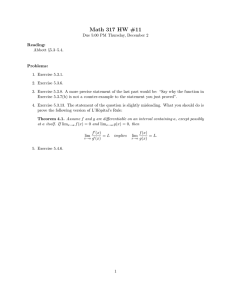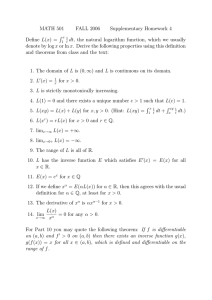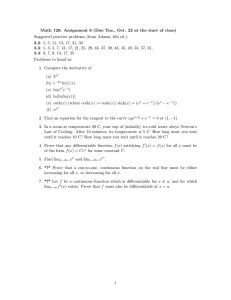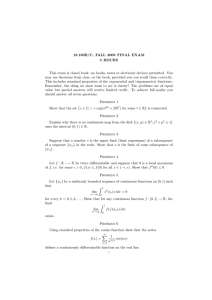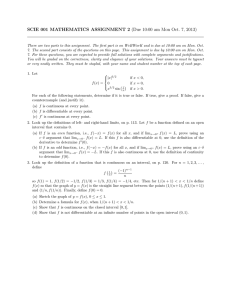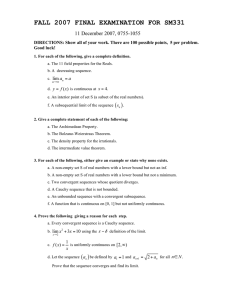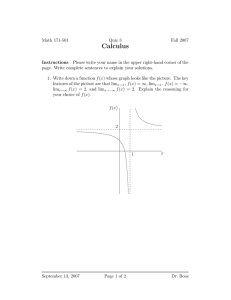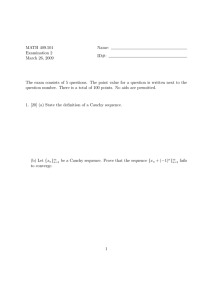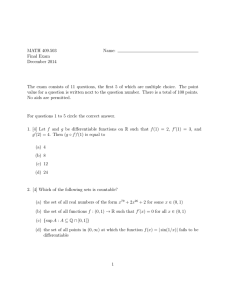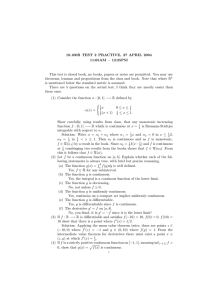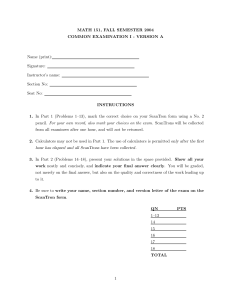MATH 409.501 Name: Examination 2 ID#:
advertisement
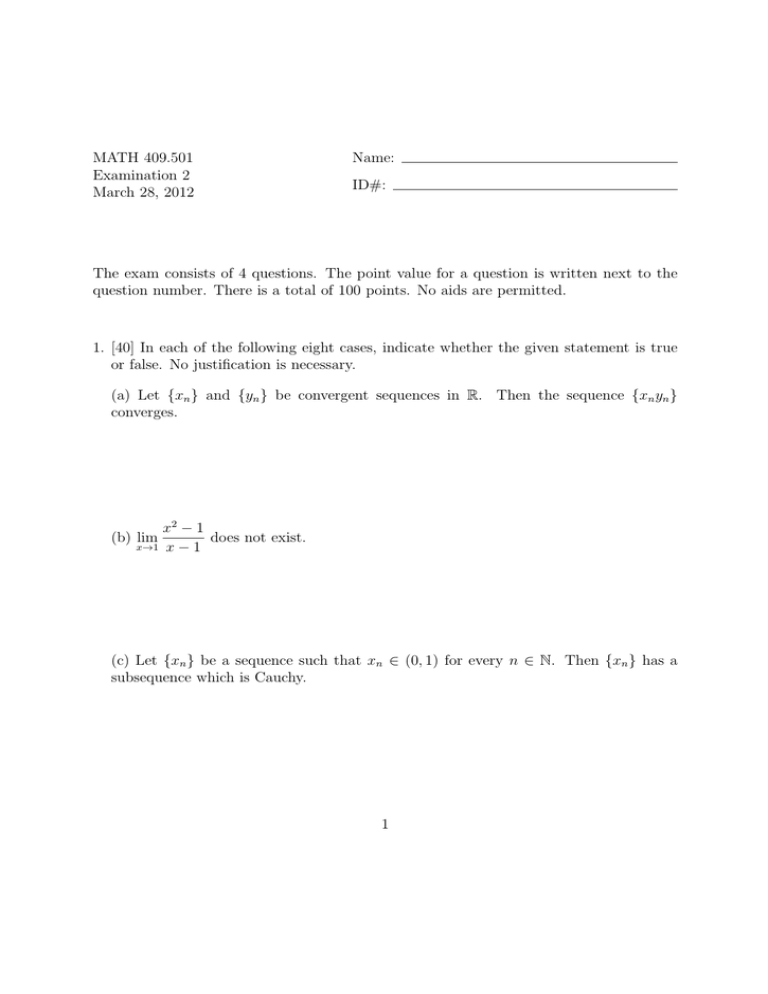
MATH 409.501
Examination 2
March 28, 2012
Name:
ID#:
The exam consists of 4 questions. The point value for a question is written next to the
question number. There is a total of 100 points. No aids are permitted.
1. [40] In each of the following eight cases, indicate whether the given statement is true
or false. No justification is necessary.
(a) Let {xn } and {yn } be convergent sequences in R. Then the sequence {xn yn }
converges.
x2 − 1
does not exist.
x→1 x − 1
(b) lim
(c) Let {xn } be a sequence such that xn ∈ (0, 1) for every n ∈ N. Then {xn } has a
subsequence which is Cauchy.
1
x − 2x2 + 5x3
= ∞.
x→∞ 6 − x + x2
(d) lim
(e) Let g be a function which is differentiable on R and define the function f by
f (x) = g(x + g(1)) for all x ∈ R. Then f 0 (x) = g 0 (x + g(1))(1 + g 0 (1)) for all x ∈ R.
(f) Let {xn } be a sequence in R with the property that each of its subsequences has a
convergent subsequence. Then {xn } is bounded.
(g) If a function is differentiable on R, then it is uniformly continuous on R.
(h) Let f be a function which is uniformly continuous on R. Then the function g
defined by g(x) = f (f (x)) for all x ∈ R is uniformly continuous on R.
2
2. [20] (a) Let f be a function defined on an open interval containing a given point a.
State what it means for f (x) to converge to a number L as x approaches a.
(b) Let a ∈ R and let f and g be functions on R such that limx→a f (x) and limx→a g(x)
both exist. Prove directly from the definition of a limit that limx→a (f + g)(x) exists.
3
3. [20] (a) State the Extreme Value Theorem.
(b) Give an example of a function f which is bounded on [0, 1] but does not have a
maximum on [0, 1].
4. [20] (a) Let f be a function defined on an open interval containing a given point a.
State what it means for f to be differentiable at a.
(b) Let f be the function on R defined by f (x) = 6x − 2. Find f (f 0 (x)).
4
